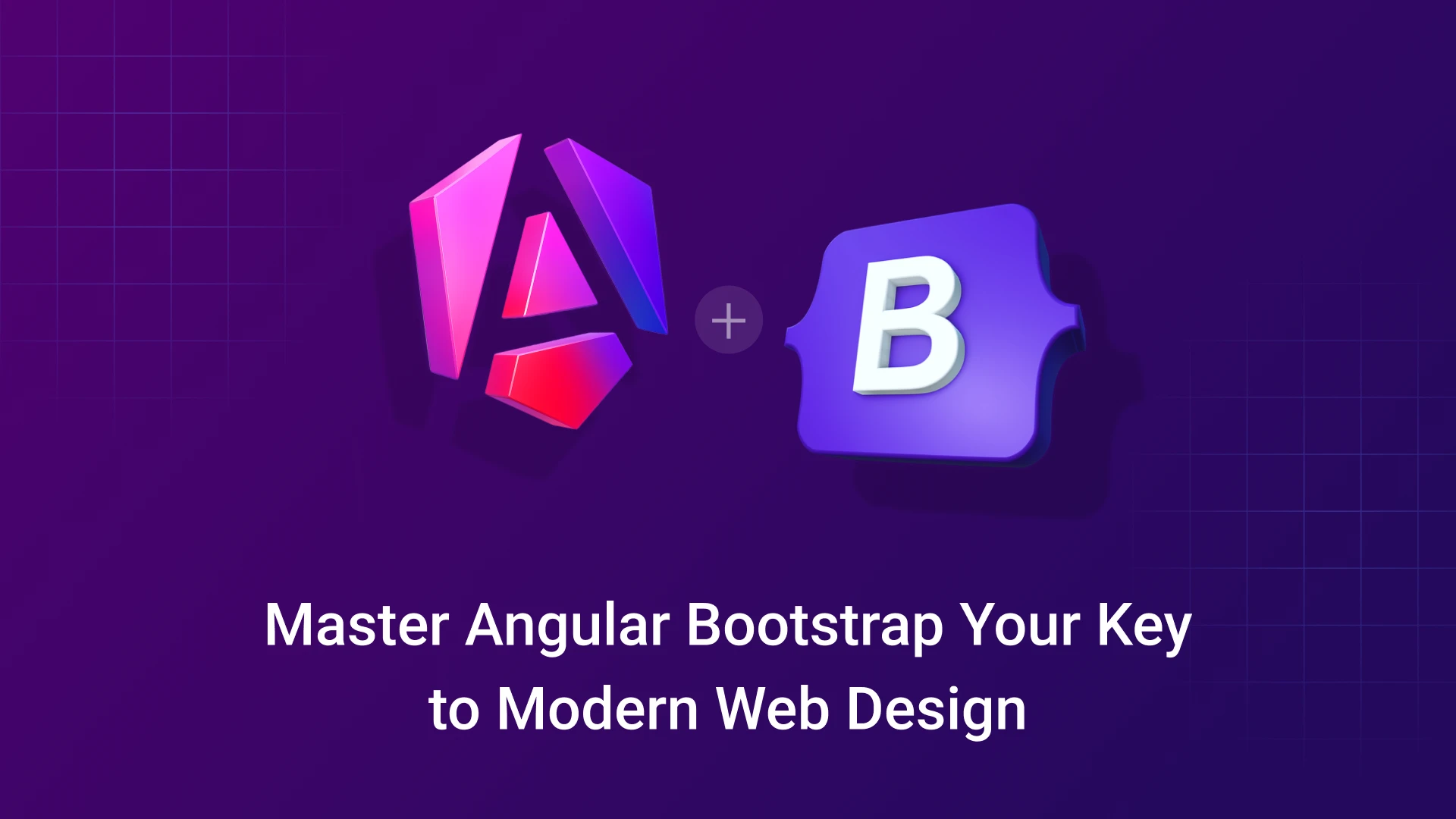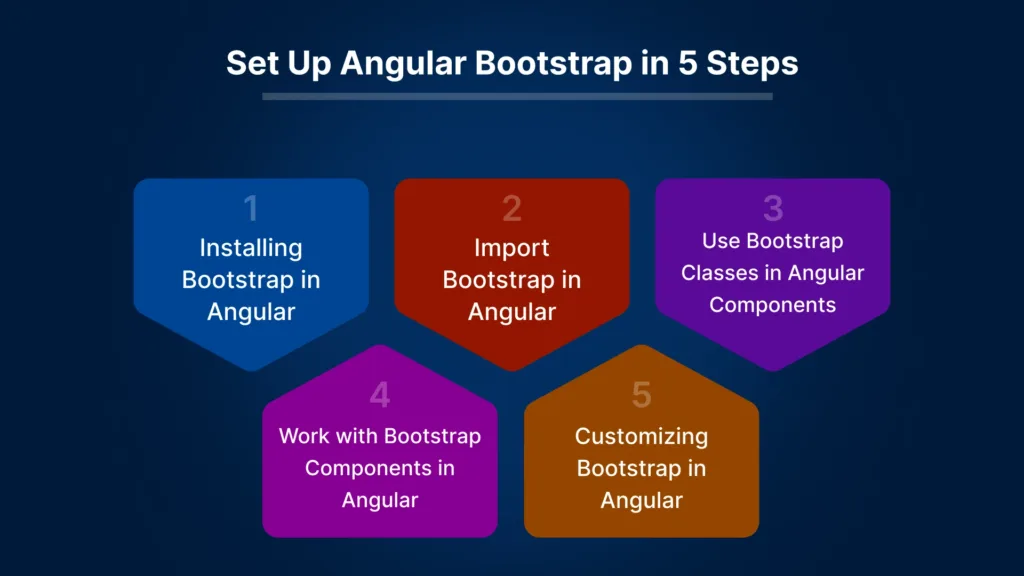
Angular Bootstrap is the name given to the combination of Angular and Bootstrap whereby it becomes a powerful tool for creating responsive, dynamic solutions with web applications. With Angular’s structure and functionality and Bootstrap’s styling and UI components, a developer creates a modern web application whose entrance into the user’s world is really easy.
History of Bootstrap
Originally from Twitter, Bootstrap came into the world in 2011 as an open-source front-end framework. It gained fast popularity due to its responsive grid system, built-in components, and the simplicity of its ease in styling. Throughout the years, Bootstrap has transformed, and the five-shape attachment of Bootstrap has made great improvements, such as cutting off jQuery, creating new grid systems, and enhancing functionality for modern CSS technologies.
Angular is a front-end JavaScript framework developed by Google that enables the creation of dynamic, client-side applications, commonly known as single-page applications (SPAs). Angular is organized, making it possible for very large analytical applications to be made with good practices.
The new combination where Bootstrap and Angular are used has been called Angular Bootstrap. With this combination, developers can now use Bootstrap’s pre-built styles and components within their Angular applications.
What is Angular Bootstrap?
Angular Bootstrap is Bootstrap integrated within Angular applications. This can be done by one or several of these approaches:
- Using Bootstrap with Angular: The developer can manually include the Bootstrap CSS and JavaScript files in the Angular project.
- Using NG Bootstrap: NG Bootstrap is an Angular-native implementation of Bootstrap components. No need to have jQuery.
- Using ngx-bootstrap: An Angular-compatible Bootstrap library that provides modular and lightweight Bootstrap components.
By integrating Bootstrap to Angular applications, developers can use Bootstrap’s styling capabilities while maintaining the component-based structure of Angular.
How Angular Bootstrap works?
This is how Angular Bootstrap works: by actually bringing in Bootstrap’s CSS classes and JavaScript functionalities to Angular applications. Given that Angular Bootstrap 5 drops jQuery dependency, integrating directly into Angular makes it much easier.
Here is how Angular Bootstrap does its thing:
- Mobile-friendly layouts can be constructed by using Bootstrap’s responsive grid system.
- User experience enhancement through numerous pre-designed UI components, including buttons, modals, carousels, and tooltips.
- Seamless UI interaction between Bootstrap classes and Angular directives, services, and components.
- Since no jQuery is used in Bootstrap 5, elements can be manipulated directly using Angular’s built-in tools.
UI development can be accelerated as developers use Angular Bootstrap CSS and prebuilt Bootstrap items while keeping the code1 modular and easy to maintain.
How to set up Angular Bootstrap?

Follow the below steps for embedding Bootstrap into an Angular project:
1. Installing Bootstrap in Angular
Open the terminal to install Bootstrap in Angular:
npm install bootstrap
Install NGX Bootstrap with:
ng add @ng-bootstrap/ng-bootstrap
You can also install it if you are using ngx-bootstrap.
npm install ngx-bootstrap
2. Import Bootstrap in Angular
After installation, add the import for Bootstrap’s CSS in the angular.json file:
"styles": [
"node_modules/bootstrap/dist/css/bootstrap.min.css"
],
"scripts": [
"node_modules/bootstrap/dist/js/bootstrap.bundle.min.js"
]
3. Use Bootstrap Classes in Angular Components
You can use Bootstrap classes in the HTML files of your Angular components now:
<button class="btn btn-primary">Click Me</button>
4. Work with Bootstrap Components in Angular
Using NG Bootstrap or ngx-bootstrap, you can implement Bootstrap components without jQuery. For instance, here’s an NG Bootstrap modal:
<button class="btn btn-primary" (click)="open(content)">Open Modal</button>
<ng-template #content let-modal>
<div class="modal-header">
<h4 class="modal-title">Modal Title</h4>
<button type="button" class="close" (click)="modal.dismiss('Cross click')">
×
</button>
</div>
<div class="modal-body">
<p>This is an Angular Bootstrap modal.</p>
</div>
</ng-template>
This way, the Bootstrap components can work in an Angular environment without jQuery.
5. Customizing Bootstrap in Angular
To customize Bootstrap’s styles in your Angular project, override its default styles by customizing it in your Angular stylesheets. For example, to change the primary button’s color:
.btn-primary {
background-color: #ff6600;
border-color: #ff6600;
}
Adjust margins, paddings, colours, and fonts with Bootstrap’s utility classes without writing any custom CSS.
Conclusion
Angular Bootstrap is the best pick for developers looking to fit the UI components of Bootstrap to Angular, which is also a powerful framework. Either using Bootstrap CSS out of the box or NG Bootstrap or ngx-bootstrap, this collaboration enhanced the developer experience with a responsive, pre-styled, and efficient front angular framework.
As explained above, setting up Bootstrap in an Angular project lets you start designing good-looking and interactive web apps immediately. Adapting new features of Angular Bootstrap 5, such as grid layout and utility classes, will help you build a clean interface and improve performance.
FAQs
1. Is Angular free?
Yes, Angular is an open-source framework. It is free because it is maintained by Google.
2. What is Bootstrap in Angular?
Bootstrap in Angular is the set of Bootstrap styles and components for an Angular application that can be imported directly or used by third-party library options like NG Bootstrap or ngx-bootstrap.
3. Where can I get Angular templates?
You can check for free and premium Angular templates available on ThemeForest, WrapBootstrap, StartBootstrap, and Angular Material.
4. Can Angular Material and Bootstrap be used together?
Yes, it’s possible to use both Angular Material and Bootstrap in the same project. However, one should be chosen for consistency in design and functionality. If both are needed, the developers must pay special attention to managing styles and dependencies to avoid conflicts.



Leave a Reply